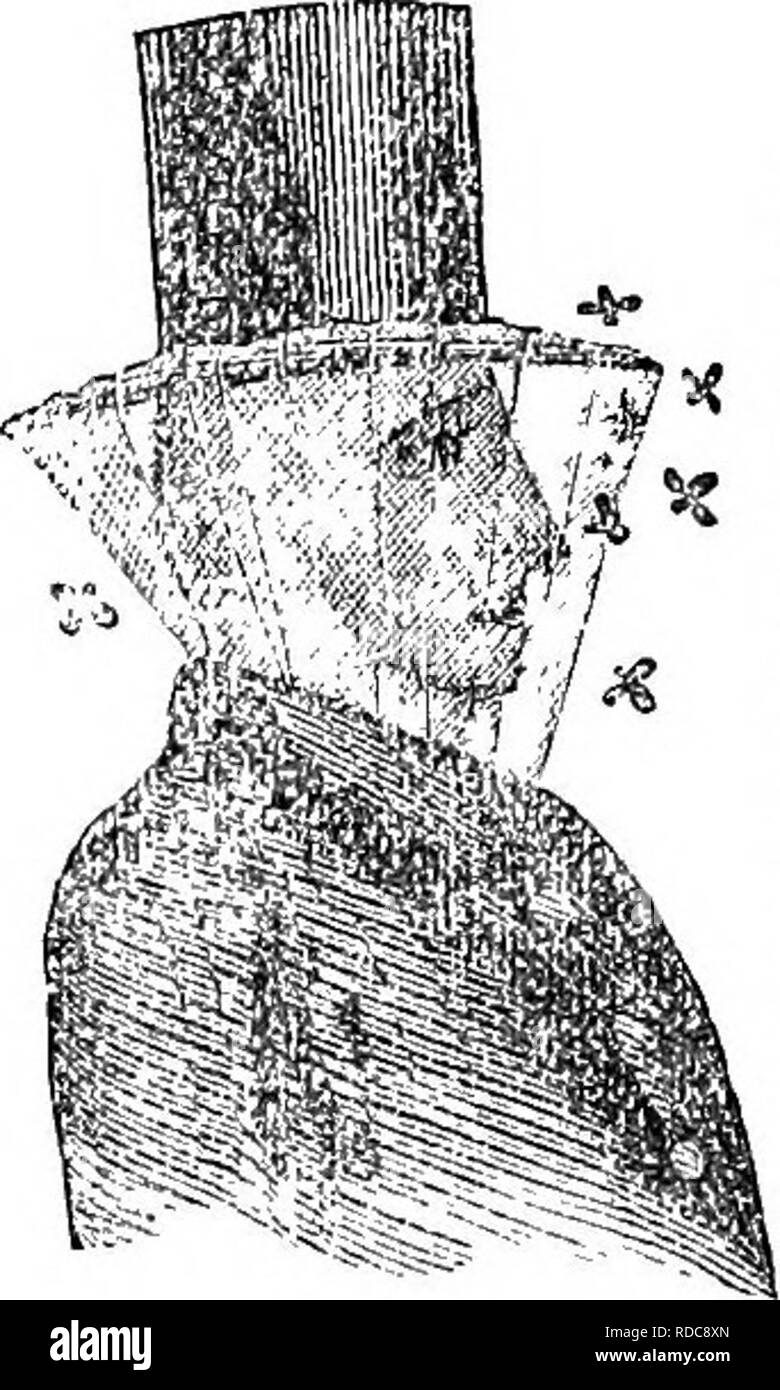. Manual of the apiary. Bees. 33 MANUAL OF THE APIARY. ,Fill both tlio hives -with empty frames, and return the new hive to its former position. The old bees will return to the old colony, wliile the young ones will remain peaceably with the new queen. The old colony will now contain at least seven frames of brood, honey, etc., the old queen, and plenty of bees, so that they will work on as though naught had transpired, though perhaps moved to a little harder effort by the added space and five empty frames. The empty frames may be all placed at one end, or placed between the others, though not

Image details
Contributor:
The Book Worm / Alamy Stock PhotoImage ID:
RDC8XNFile size:
7.2 MB (378.6 KB Compressed download)Releases:
Model - no | Property - noDo I need a release?Dimensions:
1225 x 2041 px | 20.7 x 34.6 cm | 8.2 x 13.6 inches | 150dpiMore information:
This image is a public domain image, which means either that copyright has expired in the image or the copyright holder has waived their copyright. Alamy charges you a fee for access to the high resolution copy of the image.
This image could have imperfections as it’s either historical or reportage.
. Manual of the apiary. Bees. 33 MANUAL OF THE APIARY. , Fill both tlio hives -with empty frames, and return the new hive to its former position. The old bees will return to the old colony, wliile the young ones will remain peaceably with the new queen. The old colony will now contain at least seven frames of brood, honey, etc., the old queen, and plenty of bees, so that they will work on as though naught had transpired, though perhaps moved to a little harder effort by the added space and five empty frames. The empty frames may be all placed at one end, or placed between the others, though not so as to divide brood. The new colony will have eight frames of brood, comb, etc., three from the nucleus and five from the old colony, a young fertile queen, plenty of bees, those of the previous nucleus and the young bees from the old colony, and will work with a surprising vigor, often oven eclipsing the old colony. If the apiarist has several colonies, it is better to make the new colony from several old colonies, as follows: Take one frame of brood comb from each of six old colonies, or two from each of three, and carry them, bees and all, and place with the nucleus. Only, be sure that no queen is removed. Fill all the hives with empty frames, as before. In this way we increase without in the least disturbing any of the colonies, and may add a colony every day or two, or per- haps several, depending on the size of our apiary, and can thus always, so my experience says, prevent swarming. These are unquestionably the best methods to divide, and so I will not complicate the subject by detailing others. The only objection that can be urged against them is that we must seek out the queen in each hive, or at least be sure that we do not remove her, though this is by no means so tedious if we have Italians, as of course we all will. I might give methods which would render unnecessary this caution, but they are inferior, and not to be recommended. If we proceed as above described